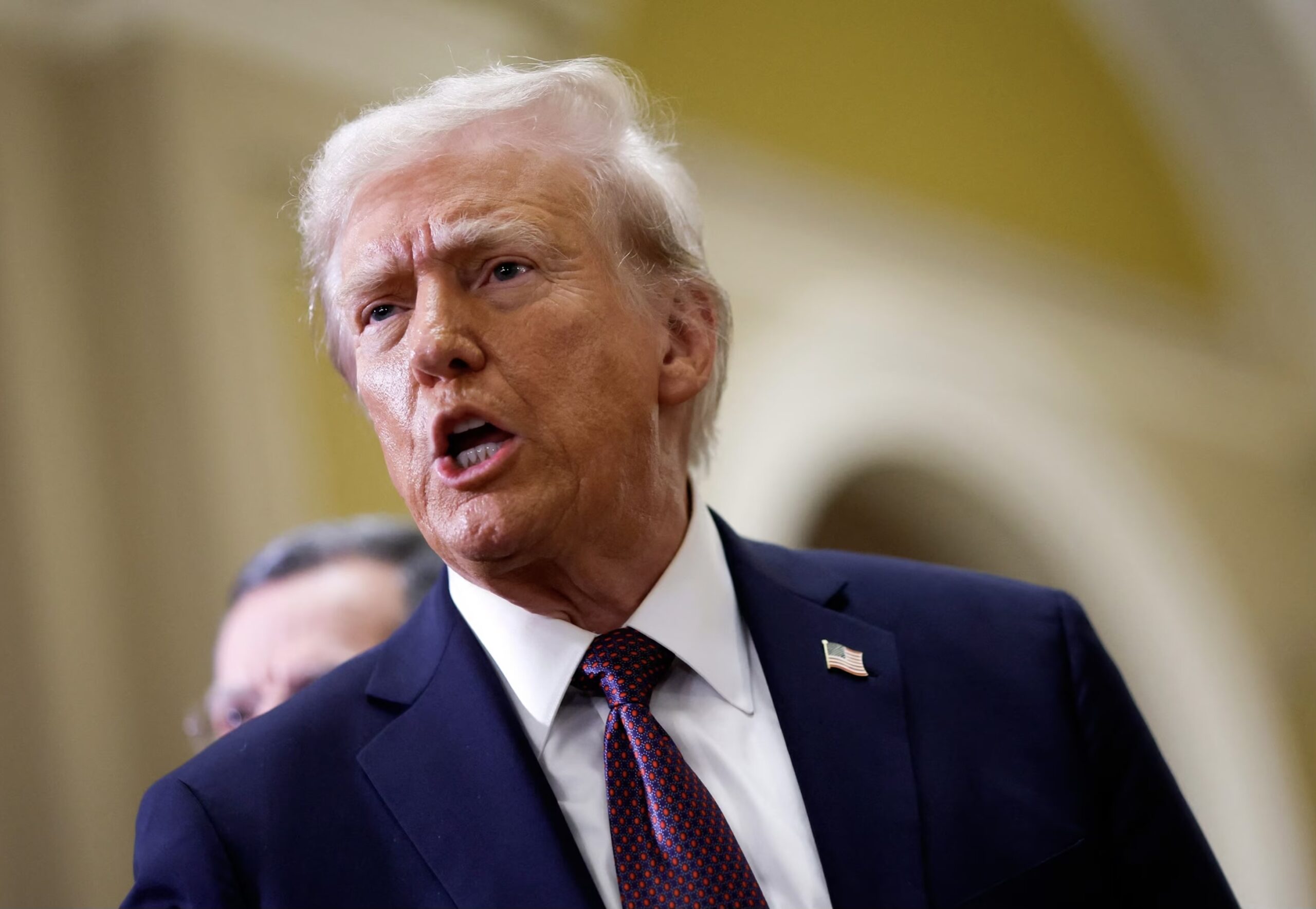A political strategist has confidently forecasted the downfall of Donald Trump’s administration, specifying when he expects it to conclude
James Carville, the prominent Democratic strategist, recently made a bold prediction during an interview, claiming that President Donald Trump’s administration is on the verge of collapsing. Speaking with Mediaite’s Dan Abrams, Carville argued that the White House team is likely to fall apart within weeks due to Trump’s controversial actions and a significant drop in approval ratings. According to Carville, the administration’s trajectory is unsustainable, driven by Trump’s polarizing policies, the firing of government officials, and executive orders that have sparked widespread controversy. He cited a poll showing Trump’s approval rating had plummeted from the low 50s to the upper 30s, a steep decline that Carville believes signals a turning point in public opinion.
Carville, who has decades of experience as a political strategist, suggested that this drastic decline in approval is an indication that the president’s administration is unraveling. He went so far as to predict that the White House would disintegrate in less than 30 days. Carville pointed out that this level of low approval was unprecedented for a sitting president so early in their tenure. His outlook on the administration’s future was grim, warning that its collapse could have serious political and economic ramifications. He even suggested that a major economic downturn might follow, destabilizing financial markets and potentially prompting a shift among Republican voters disillusioned with the administration. In this scenario, Carville suggested that Democrats could seize the opportunity, as many moderate Republicans may turn away from Trump’s leadership and seek out more stable governance.
As for the Democrats’ response, Carville recommended a strategy of remaining calm and patient, advising them to “play possum.” He believed that by not reacting hastily, Democrats could position themselves to benefit from the inevitable collapse of the Trump administration in the coming weeks. “Lay back,” he suggested, claiming that this period would present an opportunity for Democrats to make gains. Carville’s remarks implied that, once the situation became untenable, Democratic candidates would have a significant edge in upcoming elections, capitalizing on the disarray within the administration.
However, Carville’s bold prediction has not gone without its critics. In fact, President Trump himself responded sharply to Carville’s comments. On a Fox News broadcast with Sean Hannity, Carville challenged the network’s portrayal of the president’s popularity, referencing polling data that suggested Trump’s approval was at a historically low point. In retaliation, Trump posted on his Truth Social account, dismissing Carville as a “loser” and defending his own approval ratings, claiming they were “the best ever.” Trump also took the opportunity to criticize Democrats, labeling them as “broken down losers” who were losing their confidence and direction.
This exchange between Carville and Trump highlights the ongoing political polarization that continues to shape the national discourse. While Carville’s comments focus on the unraveling of Trump’s administration due to declining public support and controversial policies, Trump’s response reinforces the divide between the two sides. The disagreement underscores the intense scrutiny political strategists and pundits continue to place on the current state of the White House. Adding to the complexity of the situation is the involvement of other key figures, like Elon Musk. Musk, with his Department of Government Efficiency (DOGE), has been tasked with cutting federal spending, which has raised concerns about the potential impact of such drastic reductions on the nation’s economy and the possible acceleration of the administration’s downfall.
Political analysts have been split in their reactions to Carville’s prediction. Some share his view, pointing to the mass dismissals of government officials and the implementation of controversial policies as signs that the administration is in disarray. Others caution against making predictions too quickly, noting that political fortunes can shift rapidly in Washington, and the administration has weathered crises before. Nevertheless, Carville’s analysis resonates with those who believe the current trajectory of the administration is leading to instability.
From an economic standpoint, Carville warned that the collapse of the administration could trigger a series of negative consequences, such as market instability and increased uncertainty in job creation. He speculated that, as the White House loses credibility, even conservative Republicans could look to Democrats for a more stable alternative. Carville’s forecast also suggests that this scenario could give Democrats a significant advantage in future elections. By waiting for the administration to implode, Carville believes Democrats could emerge as the party offering stability and pragmatic solutions.
Critics of Carville’s assessment argue that predicting such an outcome is speculative. They emphasize that while the administration faces numerous challenges, it has proven resilient in the face of adversity before. Washington’s political dynamics are complex, and predicting a definitive collapse may oversimplify the situation. Nevertheless, Carville remains steadfast in his belief that the administration is on the brink of collapse, arguing that the recent actions and plummeting approval ratings point to an imminent breakdown.
In conclusion, Carville’s prediction that the Trump administration will collapse within weeks has generated significant debate. While some see his assessment as a realistic reflection of the current political climate, others dismiss it as overly dramatic. As the situation unfolds in the coming weeks, the nation will be watching closely to see whether the administration can stabilize its position or if Carville’s prediction will come to pass, reshaping the political landscape ahead of future elections.
